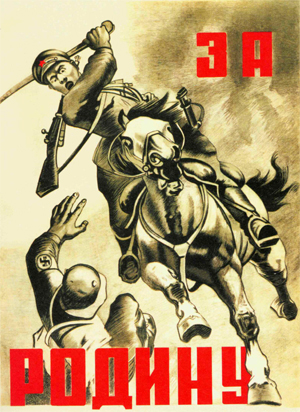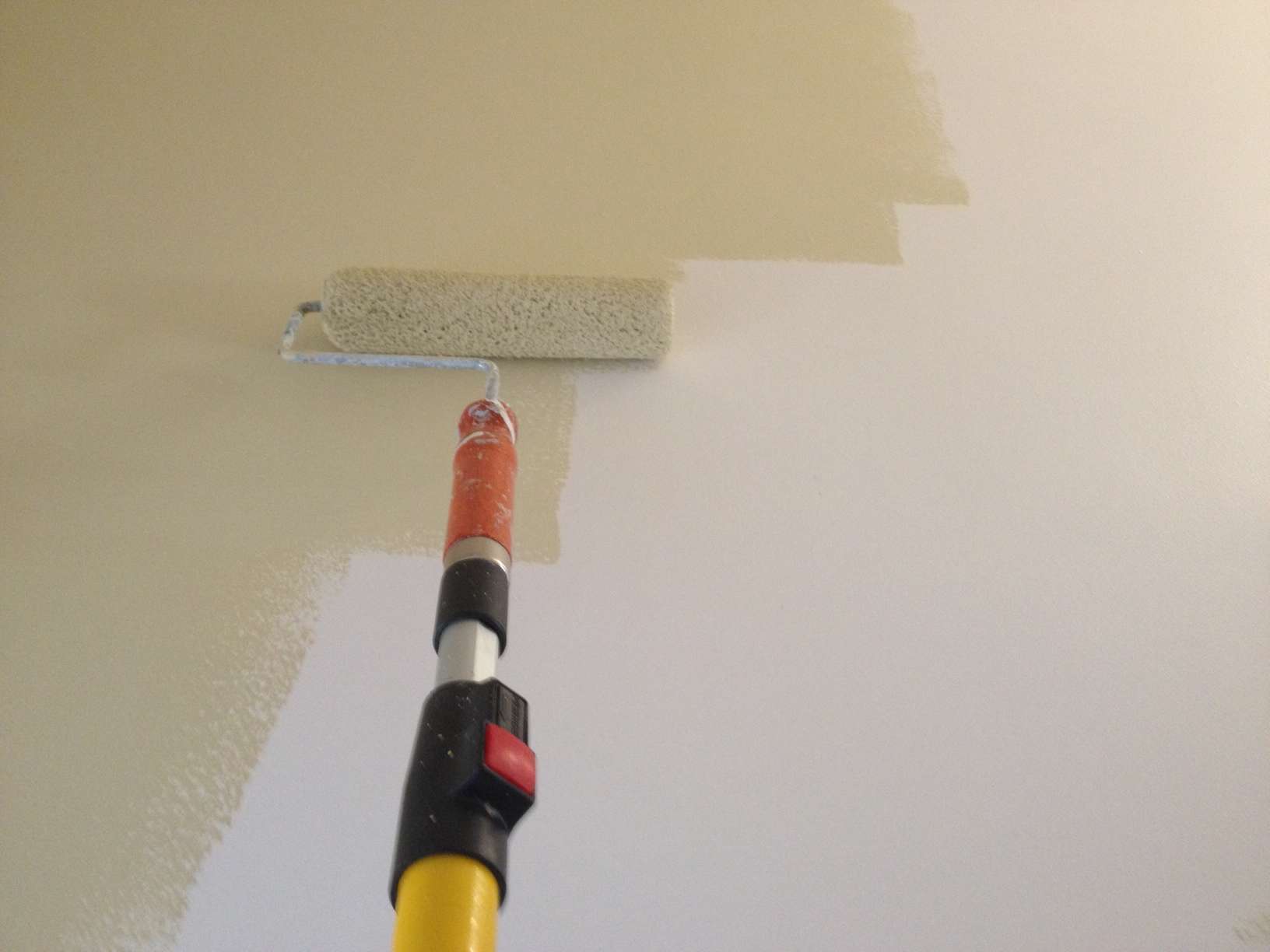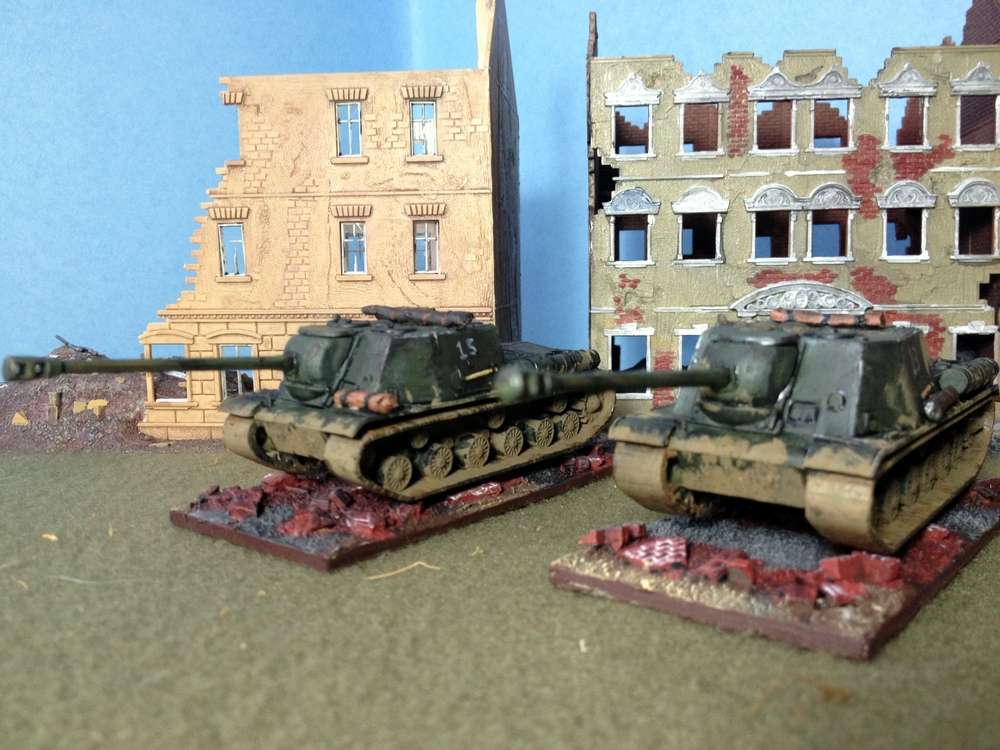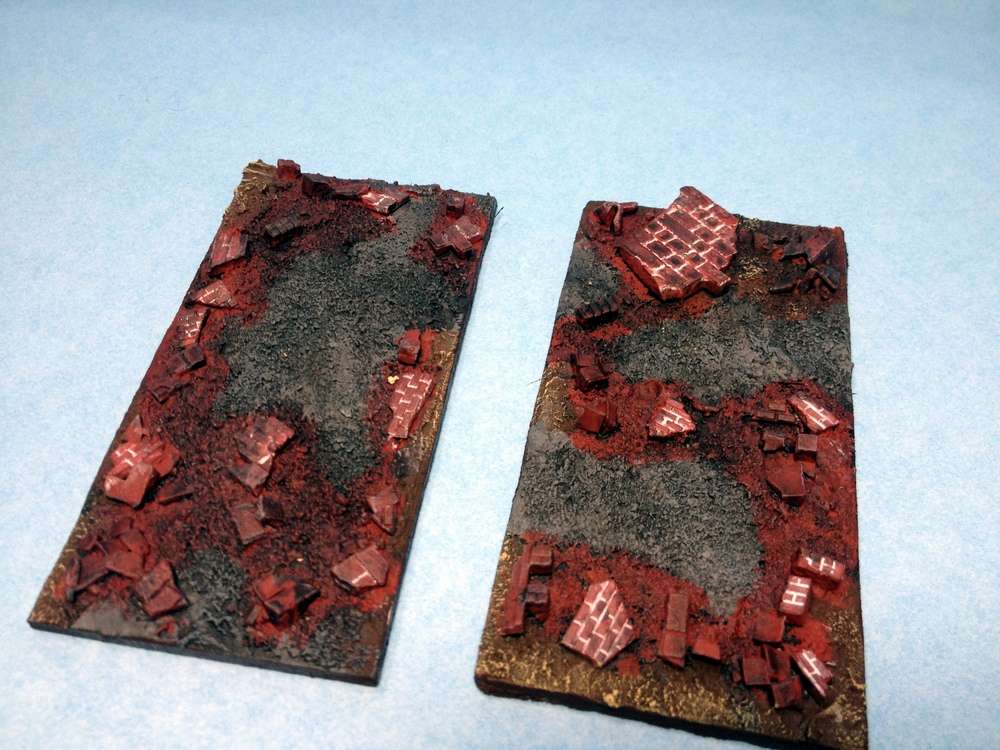This Friday at the Mad Padre's Wargaming Chapel my friend Ryan came over to help me accomplish two objectives. The first was to dust off some figures that haven't seen use in my last two moves and postings. The second was to try Ross MacFarlane's free rules, With MacDuff To The Frontier. Ross describes these as "19th Century Toy Soldier Wargaming Rules", and they always look like fun when featured on his blog. They didn't disappoint.
We chose forces by die roll, with the high dice getting the redcoats (me). Ryan took his colonial mob and set them up 18" in on his side of the table, a barren, featureless waste, with the objective of keeping the British column of Colonel Clive Whicker-Baskett from traversing the road to Strategibad. Ryan had two large units (20 figures each) of mutinous trained regular infantry, looking resplendent in their red fezzes, but rated as Militia/Levy, shown top left. In front of them was a troop of a dozen irregular cavalry with hand weapons, a large mob of some 28 irregular infantry with hand weapons, and on the bottom right a dangerous mob of 24 irregular infantry with jezail type firearms. All the irregular troops were rated as impetuous. It looked like getting through that lot would be impossible. The more pressing task for the British looked like fighting for their lives.

The British force was much smaller. I had forty figures of infantry, which I divided into four units of ten, two on my left and two on my right, with two guns in the middle. We rated the infantry as regular veterans, giving them the ability to skirmish, and rated the guns as horse artillery.
First turn to the British. I roll for orders and get to move four units, so I elect to move my two guns forward ten inches and unlimber. On the bottom right, I send a company of the Black Watch forward in skirmish. On the top left, I send a company of the Lancashires forward in skirmish, hoping to grab that nice steep hill that guards my left flank.
Ryan unleashes his mobs of infantry. The figures in white are part of a whack of colonial figures are I think RAFM or Ral Partha, as are all of the British. The shirtless chaps on the top left, well, I have no idea who made them. Sing out if you know more than I do. Had them for ever, bought them painted in a job lot for my 28mm Ottomoan army, known to my wargaming group at the time as "The Turkish Love Slaves". Go figure.
Ryan sends his cavalry forward, hoping to grab the hill. I have a grand total of one order to respond before they get there, so I send the Lancs forward to grab the hill and form square. I bite my nails hoping that they will hold.
Lancs musketry drops a rider on the way in. In melee the cavalry are penalized by charging uphill and fighting infantry in square, so they need a 6 on a d6 to cause a casualty, whereas the infantry need a 4-6 per d6, so the Brits have the advantage in a melee that would last for several turns. . One thing that wasn't clear to us was whether the infantry could shoot in the action phase before the melee phase. We gave the infantry the benefit of the doubt, which helped them whittle down the cavalry to the break point in a few turns.
While the fight on the hill rages, the British artillery bombards the love slaves (I can't resist calling them that) on their way in, while the forward company of the Black Watch engages the native riflemen on the hill, drawing first blood.
"Steady, lads!". The Black Watch skirmishers fall back and reform on their sister company, ready for the coming storm. As mentioned before, the British figures are RAFM (Ral Partha?). I got them all in a trade. Their owner wanted the Sharpe and Sgt. Harper figures that I got when I bought the Sharpe Practice rules from Too Fat Lardies when they were released. He was willing to offer a hundred well painted colonial figures in return, including the two guns. Who was I to refuse? I think I got the better of the deal.
The tragic scene a moment later. The Black Watch elect to stand and shoot as the love slaves charge home, and in the melee that follows drive them below their 50% break point and drive them off, but at a terrible cost. The right hand company of the Higlanders is reduced to 40% and routs, while the left hand company is down to 60%. The British right wing is now looking rather shaky, and there is still another mob threatening the right.
On the left the Lancs, having seen off the cavalry, whose remnants can be seen skulking in the rear, now resume skirmish order and shoot at the enemy regulars as they move forward. At this point Ryan had a miserable streak of luck, rolling a series of 1s and 2s for his orders, and thus a very piecemeal and halting attack, which saved me from being swamped.
A nice feature of MacDuff is the rally rule, which allows you to try and recover casualty figures, though with the risk that the unit might not rally, but panic and fragment further. In this case Col. Whicker-Baskett was fortunate, returning one company of the Highlanders from 6 to 8 figures, as they get ready to stand against the oncoming mob.
Col. Whicker-Baskett just has time to attach himself to his rallied and remnant Highlanders before the mob is on them, determined to do or die with his men.
Sadly all the remaining Highlanders are killed in the melee, along with several of the mob. The Colonel is captured and led off into captivity. The game is lost!
But wait, what's this? Ryan counts his casualties and discovers that in dying in place, the Black Watch dropped the mob below their 50% break point. We decide that the mob routs and runs away, leaving Col. Whicker-Baskett standing, his smoking Webley revolver in hand. The man's a bally hero!
Ryan watches as the fight against the Highlanders unfolds, while his infantry plods forward, taking a heavy pounding from the Lancs and from the British artillery. The next turn will be decisive.
Ryan's infantry trudge forward, but the rserve company of the Lancs, my last untouched unit, steps forward and unleashes a volley, devastating the one unit. The survivors melt away, and that breaks the moral of Ryan's army. We call it a night.

Two good things happened tonight. We had a terrific game, thanks to a rules set that Ross has generously provided to the gaming community. MacDuff was quite friendly and easy to play, with only a few questions that I need to put to Ross offline, probably because I didn't read the rules carefully enough. Thanks for these great rules, Ross, they were great fun. The other good thing was that I got a chance to have a great game with Ryan, and to use a whole mess of figures for the first time. Hopefully they will be used again soon. I have plans for another outing with MacDuff soon. They are billed as being 19th century rules, but I have a feeling that they will work for my 18th century Russians and Turkish armies, which is basically a colonial wars matchup only with tricornes instead of pith helmets. Thanks for reading, and may God prosper yoour brushes and dice rolls.
















































